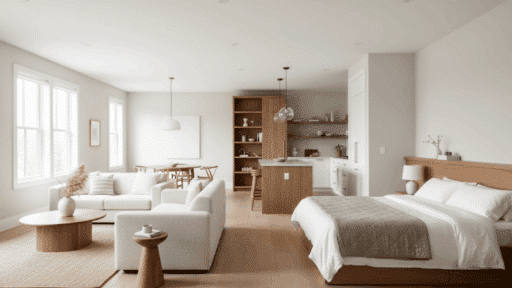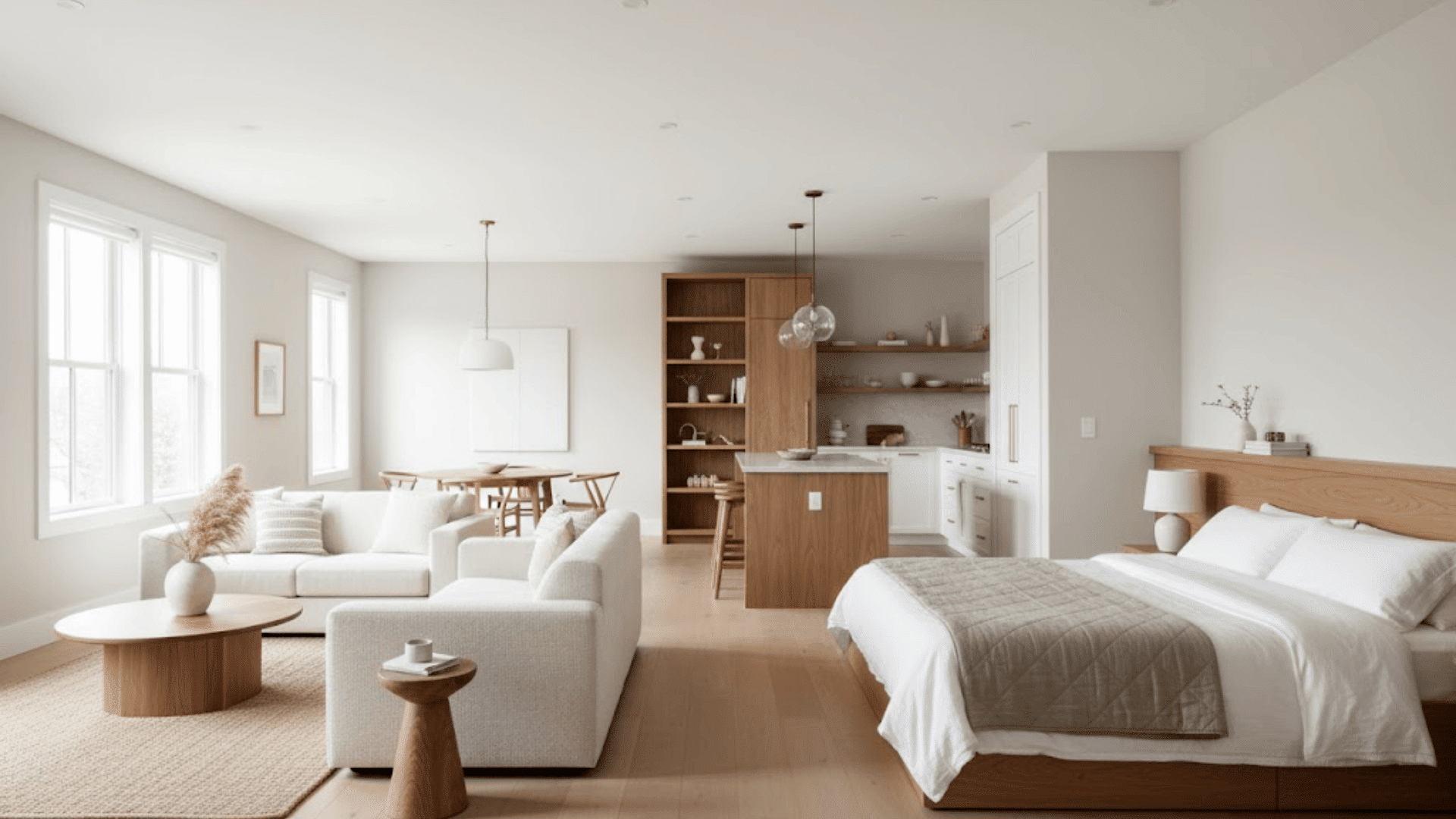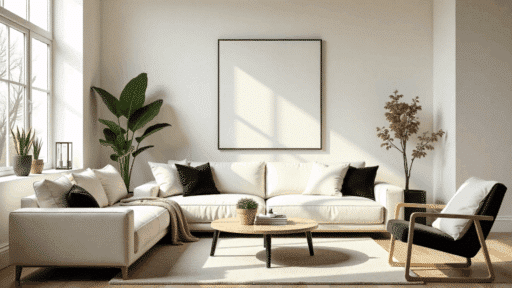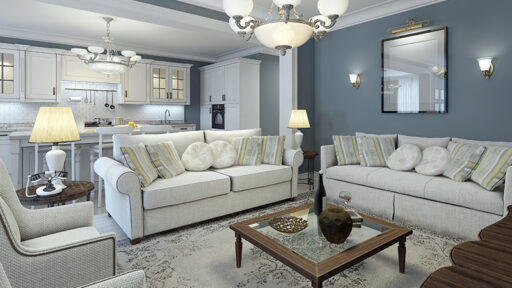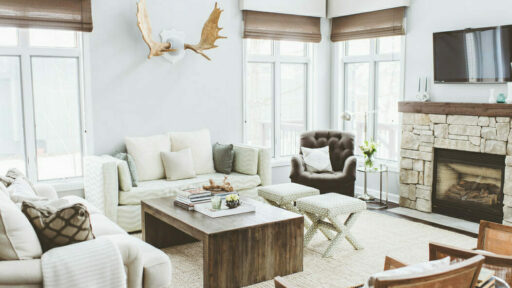Choosing paint can feel overwhelming, but Oyster White gives you a calm, steady starting point. It’s a soft shade that works well when you want warmth without strong color.
I’ve seen it help rooms feel relaxed, even when the lighting changes throughout the day.
Today, you’ll get a clear look at how it behaves in different spaces, how lighting affects it, and which colors pair well with it. I’ll also cover how it compares to other popular whites and which finishes give you the best results.
Let’s figure out if this shade fits the look you want in your home.
Getting to Know Sherwin-Williams’ Oyster White
Oyster White (SW 7637) by Sherwin-Williams is a soft, calm off-white paint color with a gentle warmth. Many people use it when they want a light shade that isn’t stark or too bright.
Basic Color Profile
HEX code: #E2DDD0
LRV (Light Reflectance Value): 72
Color family: Warm off-white with a light greige influence
Oyster White is warm without feeling yellow and soft without feeling flat. It sits in a spot that feels steady and easy to use in many rooms. It’s light and easy on the eyes, giving your space a relaxed, even look.
Undertones Explained
Oyster White has gray and beige undertones that sit quietly in the background. They shift depending on the light in your room.
- In bright daylight, you may notice more of the gray side.
- In warm indoor lighting, the beige side becomes clearer.
Because of this gentle shift, it’s smart to test Oyster White on your walls first to see how it reacts to your lighting throughout the day.
How Oyster White Looks in Real Spaces
Oyster White is one of those shades that feels at home in many spaces. I’ve seen it look great in everything from warm, cottage-style homes to simple, modern rooms.
1. Living Rooms
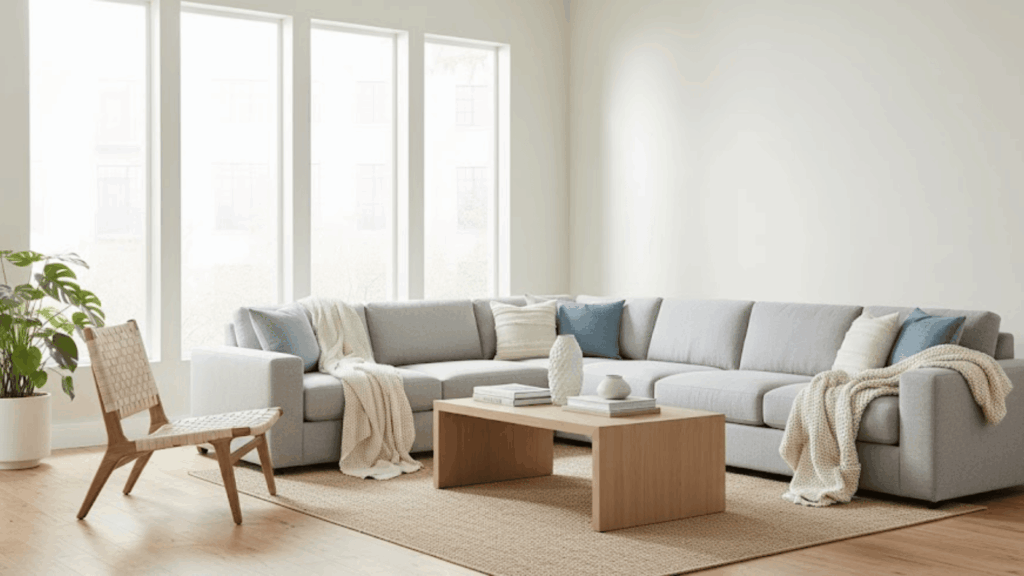
In a living room, Oyster White adds a gentle warmth that feels calm and welcoming. It handles daylight well and leans a bit warmer at night, giving the room an easy, relaxed feel.
2. Bedrooms
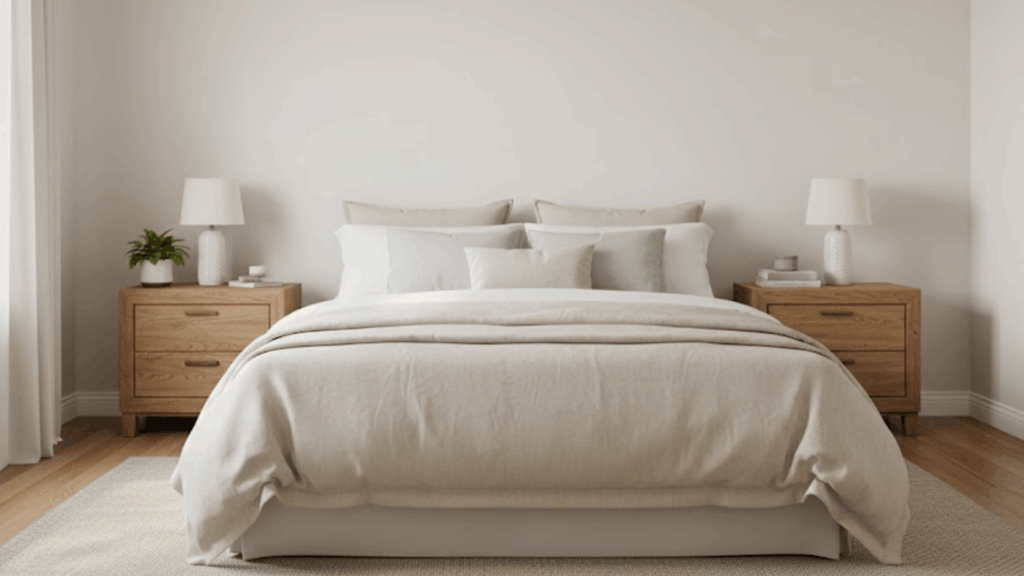
This shade works well in bedrooms because it’s neutral without looking dull. It creates a quiet, steady look that pairs nicely with soft bedding, wood pieces, and simple textures.
3. Bathrooms
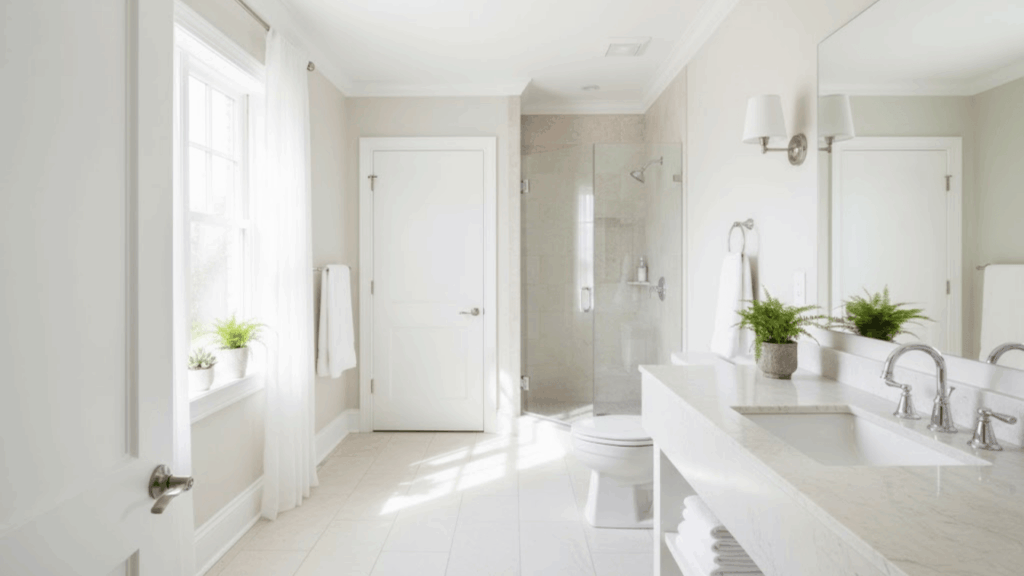
In bathrooms, Oyster White works nicely with bright white trim and stone finishes. Its soft tone adds warmth to cooler materials, helping the room feel clean but not harsh.
4. Kitchens
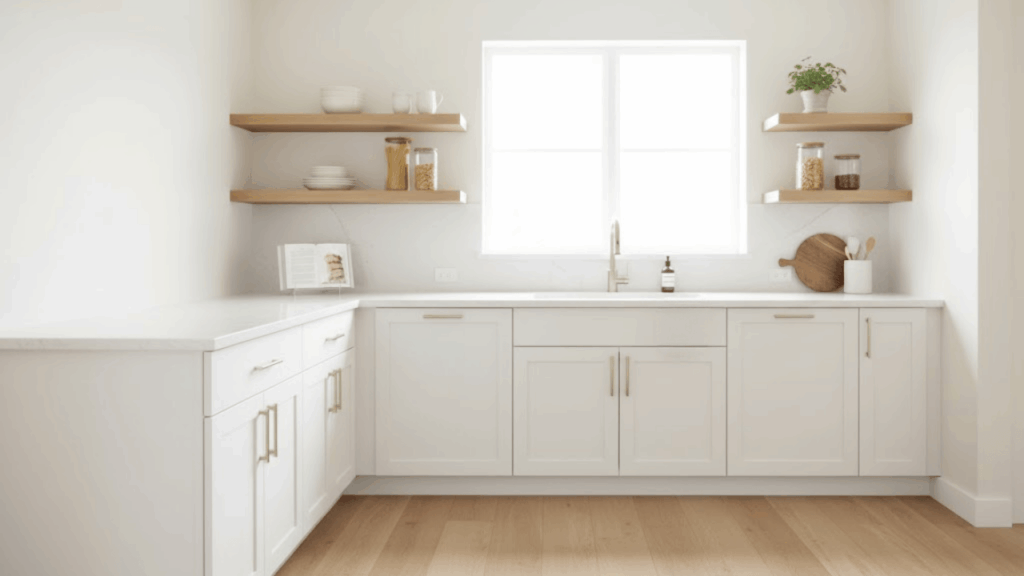
Oyster White pairs well with white or off-white cabinets and warm wood details. It highlights the natural color in wood floors and shelves, giving the kitchen a bright, comfortable look.
5. Exteriors
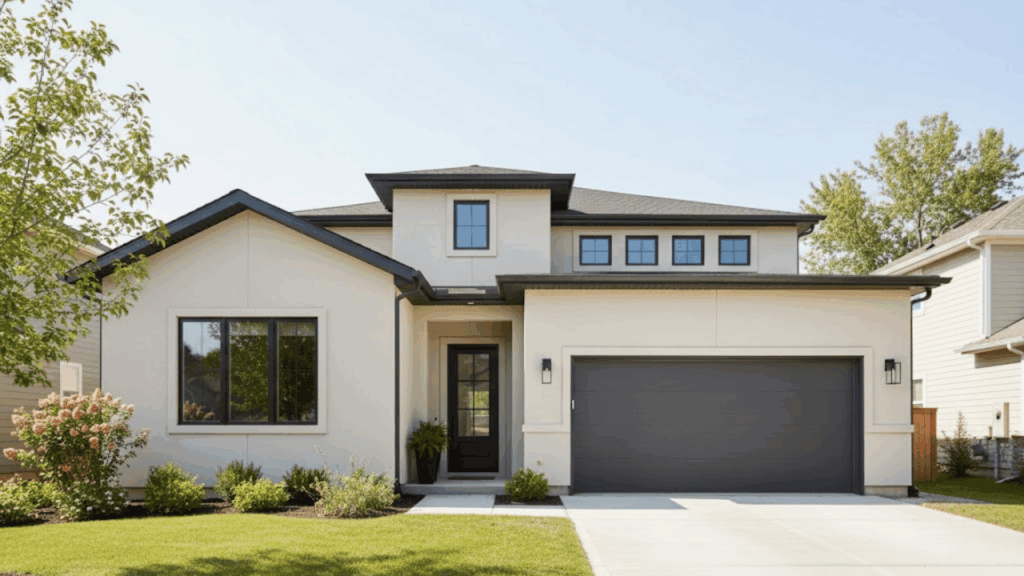
On exteriors, I’ve seen Oyster White used on a wide range of home styles. It looks creamy in direct sun but doesn’t turn yellow, making it a steady option for siding, brick, or stucco.
How Lighting Affects It
- North-facing rooms: Natural light from the north is cooler, so Oyster White tends to show more of its gray side. It looks calm and balanced but slightly muted; great if you want a softer, neutral backdrop.
- South-facing rooms: Warm sunlight brings out the beige and creamy undertones. In my experience, this is where Oyster White feels coziest, adding warmth without turning yellow.
- Warm bulbs vs. cool bulbs: Under warm lighting, Oyster White takes on a beige tone that feels inviting. Cool LED light pulls out its gray undertones, giving it a cleaner, more modern appearance.
If you can, test it on different walls before committing. That’s what can help you decide whether it feels right for your space.
Coordinating & Complementary Colors
Trim Colors: I like Alabaster (SW 7008) for a warm, soft look, while Pure White (SW 7005) gives you a sharper, cleaner edge. If you prefer something gentler, Creamy (SW 7012) blends beautifully without making the trim disappear.
Accent Colors: Accessible Beige (SW 7036) adds just the right warmth for a subtle contrast, and Chatroom (SW 6171) ties in nicely with Oyster White’s green-gray undertone. For a deeper accent, Urbane Bronze (SW 7048) creates a grounded, modern touch that works well on doors or built-ins.
Coordinating Colors: The official Sherwin-Williams pairings include Analytical Gray (SW 7051), a balanced warm gray that adds quiet depth, and Brassy (SW 6410), a muted golden-brown that brings in a natural, earthy richness without feeling heavy.
Exterior or Door Pairings: On exteriors, Gauntlet Gray (SW 7019) looks bold yet classic for doors, while Iron Ore (SW 7069) gives a deep, dramatic contrast that’s great for trim or shutters. If you want something cooler and softer, Tinsmith (SW 7657) balances beautifully against Oyster White siding.
Oyster White vs. Other Sherwin-Williams Whites
Oyster White sits in that middle space between warm and neutral, but it’s not alone. Here are a few Sherwin-Williams favorites that people often consider alongside it.
Oyster White vs. Shoji White
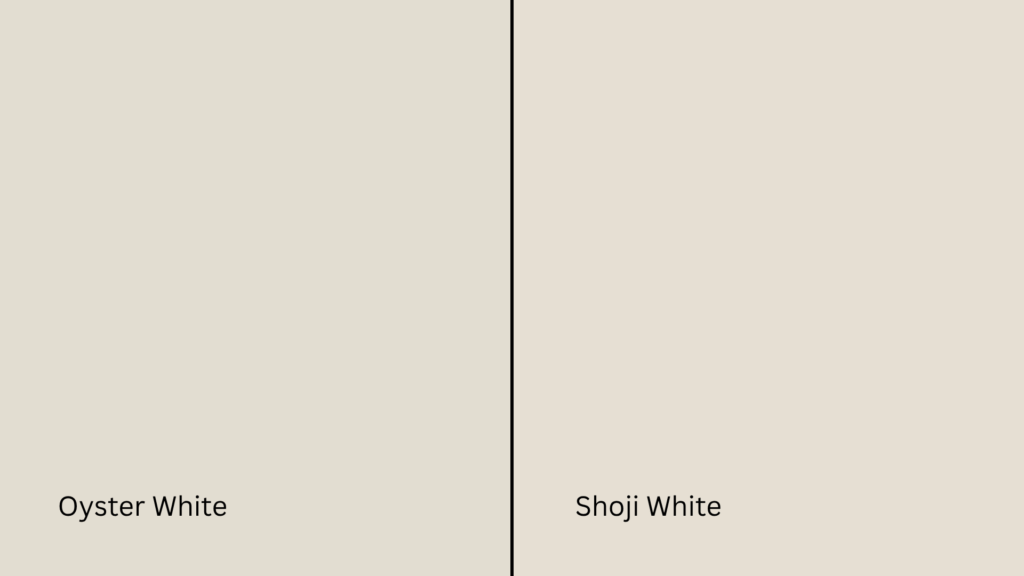
Shoji White (SW 7042) is a bit warmer and creamier than Oyster White. It has stronger beige undertones, which can feel cozier in low light. Oyster White, on the other hand, reads softer and more balanced.
I’d use Shoji White in bedrooms or dining rooms, and Oyster White in brighter spaces like living rooms or exteriors.
Oyster White vs. Alabaster

Alabaster (SW 7008) is lighter and creamier, with a more noticeable yellow undertone. It brightens rooms beautifully but can feel too warm in south-facing light.
Oyster White feels calmer and more neutral, especially in rooms with a lot of natural light. I’ve seen it work better in open layouts where balance matters.
Oyster White vs. Greek Villa
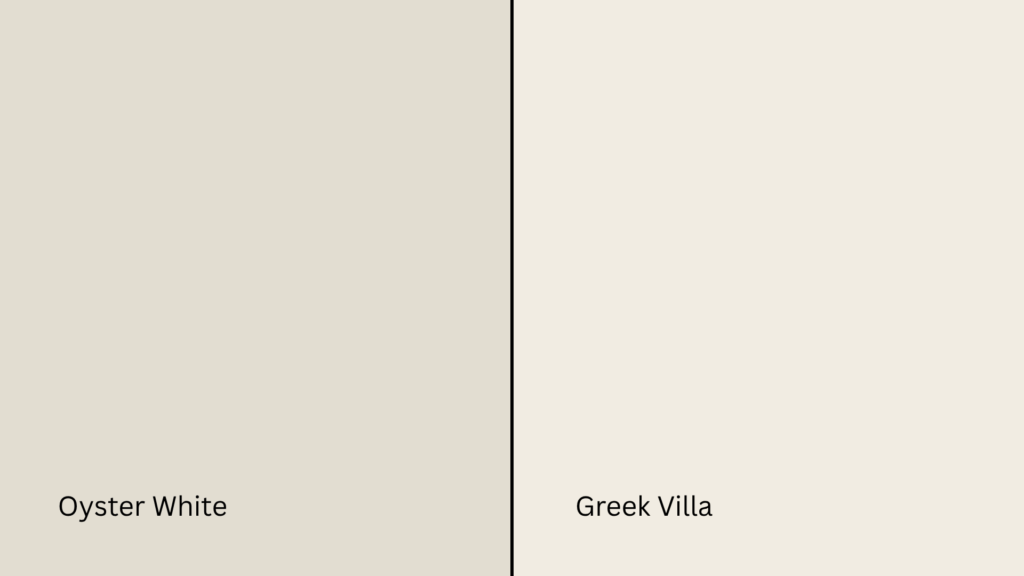
Greek Villa (SW 7551) has a higher LRV and a clean, creamy warmth. It reflects more light, so it looks fresh and airy even in darker rooms. Oyster White leans more grounded, with its gray-beige undertone.
I’d use Greek Villa in small spaces that need brightness, and Oyster White in larger rooms where you want warmth without glare.
LRV Comparison Table
| Color Name | SW Code | Tone | LRV | Best For |
|---|---|---|---|---|
| Oyster White | SW 7637 | Warm neutral (beige-gray) | 72 | Balanced, soft light rooms and exteriors |
| Shoji White | SW 7042 | Warm beige | 74 | Bedrooms, dining rooms, low-light spaces |
| Alabaster | SW 7008 | Creamy warm white | 82 | Bright, airy interiors with natural light |
| Greek Villa | SW 7551 | Soft creamy white | 84 | Smaller or darker rooms needing extra brightness |
Best Finishes for Oyster White by Use Cases
Interior walls – Eggshell or Satin: Both give a smooth, soft look without too much shine. Eggshell works well for most living areas, while satin adds a little extra durability for kitchens, hallways, or bathrooms.
Trim – Semi-Gloss: A semi-gloss finish helps trim stand out against matte walls. It’s also easier to wipe clean, which makes it perfect for doors, baseboards, and window frames.
Exteriors – Flat or Satin: Flat hides surface imperfections and gives a natural look, while satin adds a little sheen and better protection. In my experience, satin is ideal if your home gets a lot of sunlight or moisture.
The right finish can make a big difference in how Oyster White looks and lasts. It performs best when you match the sheen to the surface and lighting in the room.
Where to Buy Oyster White in the U.S.
Sherwin-Williams makes paints widely available both online and in stores, so you can get samples or gallons without any trouble.
- Sherwin-Williams Stores: You can buy quarts, gallons, or sample sizes directly from any Sherwin-Williams location. Use their online Store Locator to find one near you.
- Online Ordering: Visit sherwin-williams.com to order Oyster White for pickup or home delivery. They often list coordinating palettes and finish options, too.
- Authorized Retailers: You’ll also find Oyster White through approved retailers like Lowe’s or MyPerfectColor, where you can get color-matched samples and touch-up paints.
Tip: Always test a sample before buying full gallons. Lighting and surface texture can change how warm or gray Oyster White appears in your space.
Oyster White Equivalents in Other Brands
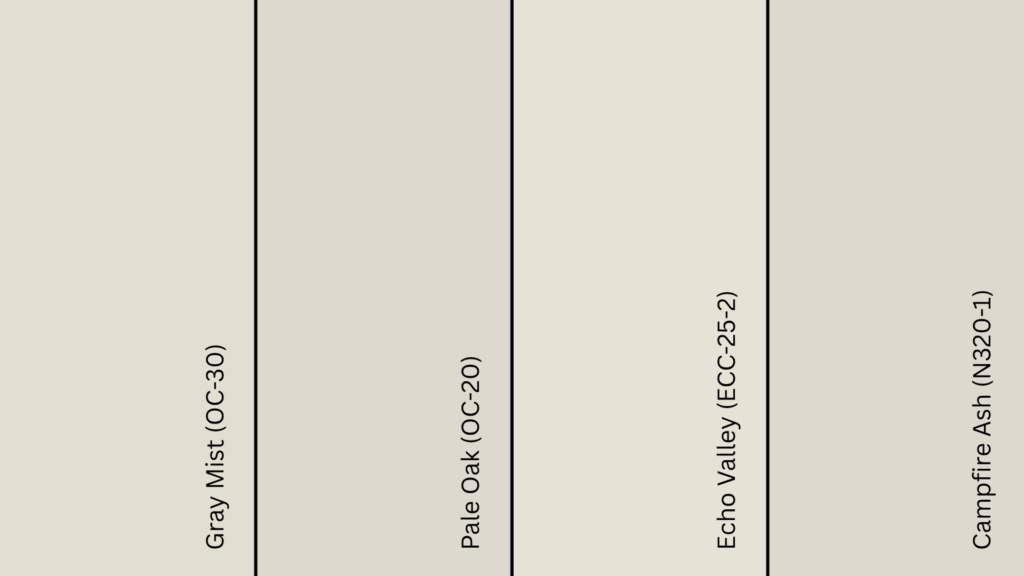
If you like Oyster White but use or prefer another paint brand, here are some close matches to consider. These aren’t exact, but they’re good alternatives.
From Benjamin Moore: Gray Mist (OC-30), a similar warm greige tone that aligns closely with Oyster White’s balance of beige and gray. Pale Oak (OC-20) is a touch deeper and slightly warmer than Oyster White, with a soft greige tone that adds gentle contrast while staying in the same neutral, easy-to-use color family.
From Behr: Echo Valley (ECC-25-2), a warm neutral match that keeps a soft, light feel similar to Oyster White. Campfire Ash (N320-1), slightly deeper, but with comparable warmth and undertone to Oyster White
Tip: Even small differences in undertone or formulation can show up on your walls. I always recommend painting a 2-foot square sample on each wall and observing it at different times of day before buying full cans.
Wrapping Up
Choosing the right paint can shape how your home feels, and Oyster White gives you a calm, steady option that works in many settings.
It’s a shade that stays reliable as light shifts, which makes it easier to trust on both interiors and exteriors.
The mix of gray and beige supports many styles without pulling the eye too strongly in one direction. If you want a color that feels easy to live with and simple to coordinate, this one fits that need well.
Try a sample on your walls so you can see it in your own light, and start planning your project today.

